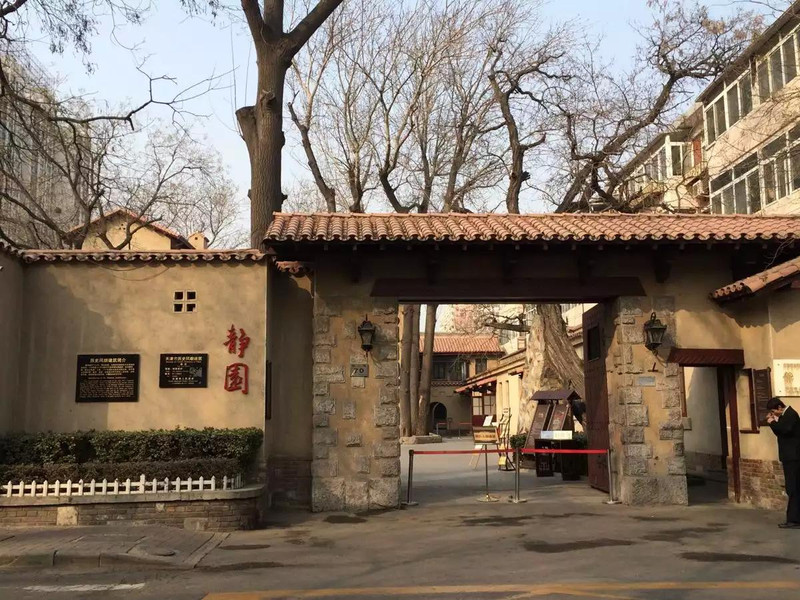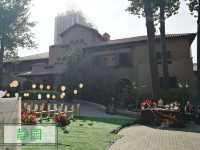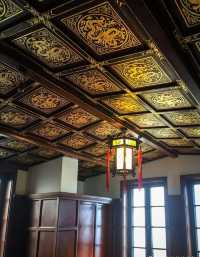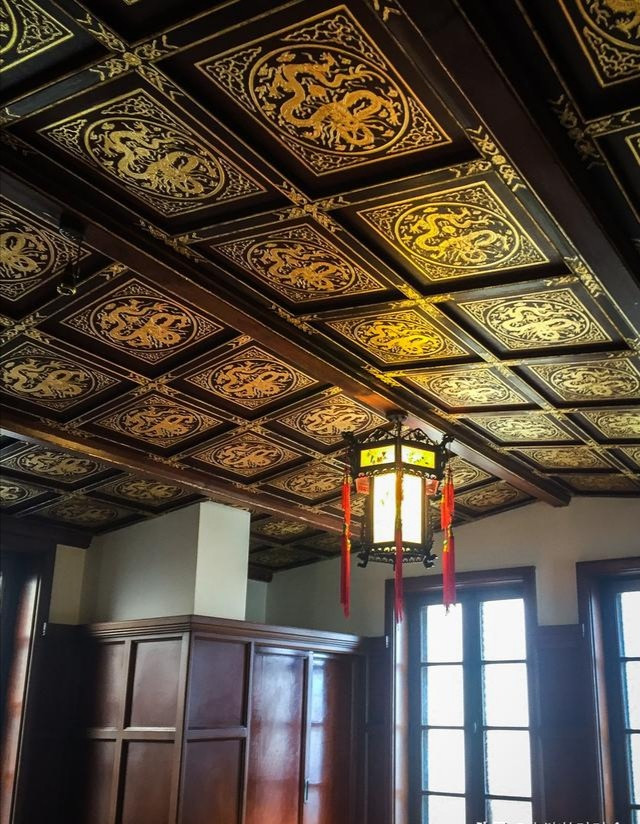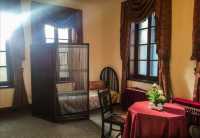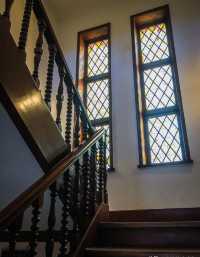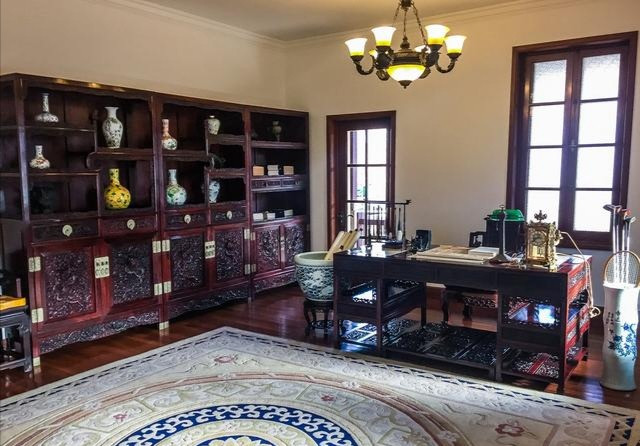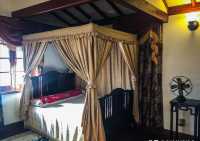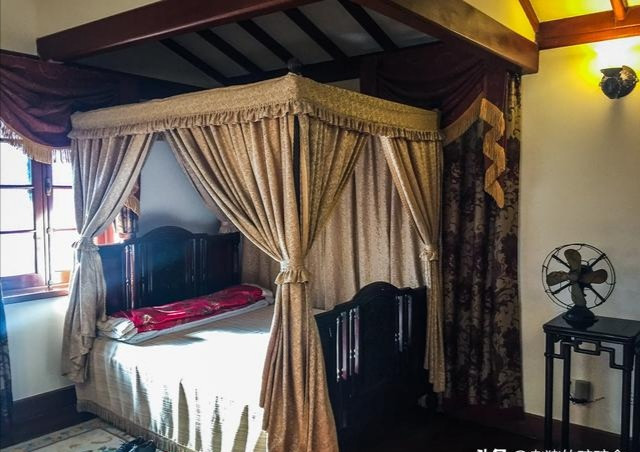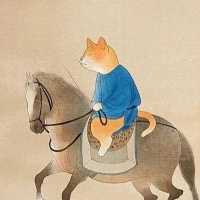On February 23, 1925, the last emperor of the Qing Dynasty, Aixin Jueluo Puyi, who was only in his early 20s, was expelled from the Forbidden City. Although he began a life of exile, Puyi decided that day as the day of the dragon's rise. He always believed that he always had a day of resurgents. The Fuyi, who left the Forbidden City, took the queen, the concubine and the brother and sister to Tianjin's daily concession, originally lived in Zhangyuan (just diagonally opposite). On July 9, 1929, Fu Yi with Queen Wanrong, Concubine Wenxiu, moved to the dry garden of Tongjie (now No. 70 Anshan Road) to live, in order to take the artistic conception of "quiet to raise my spirit", he changed the dry garden to Jingyuan, ready to watch its change here, wait for the time, to picture the arrival of the day of Dongshan's re-emergence. What the last emperor did not expect was that he lived for two years. During this period, he did not wait for the miracle of returning to the Forbidden City, but he got his own concubines Wenxiu divorce application. Throughout Chinese history, the emperor was publicly rested by the concubines, which is definitely a time for no one before and no one after. In the chaotic scene where you sang my appearance, no one could really be detached, as did this quiet garden, which covers more than 3,000 square meters, and the last emperors who lived in the quiet garden, no day was quiet.
;
Jingyuan Garden Review
4.7 /53054 Reviews
Popular Destinations
Zurich Travel | Shanghai Travel | Murano Travel | Cha-am Travel | Frankfurt Travel | Shangri-La Travel | Xi'an Travel | Xinjiang Travel | London Travel | Emerald Travel | Suzhou Travel | Melbourne Travel | Huizhou Travel | Lombok Travel | Shantou Travel | Rarotonga Travel | Saipan Travel | Roxas City Travel | Lourdes Travel | Monte Carlo Travel | Ballymena Travel | Sosua Travel | Batu Cermin Travel | Edzell Travel | Zigui Travel | Nordwestmecklenburg Travel | South Stormont Travel | Jing County Travel | Peebles Travel | Gyeongju Travel
Recommended Attractions at Popular Destinations
Bangkok attraction near me | Tokyo attraction near me | Manila attraction near me | Hong Kong attraction near me | Seoul attraction near me | Taipei attraction near me | Los Angeles attraction near me | New York attraction near me | Shanghai attraction near me | Kuala Lumpur attraction near me | Shenzhen attraction near me | Osaka attraction near me | Singapore attraction near me | Guangzhou attraction near me | London attraction near me | San Francisco attraction near me | Beijing attraction near me | Macau attraction near me | Bali attraction near me | Paris attraction near me | Ho Chi Minh City attraction near me | Orlando attraction near me | Jakarta attraction near me | Phuket attraction near me | Chicago attraction near me | Toronto attraction near me | Istanbul attraction near me | Cebu attraction near me | Dallas attraction near me | Seattle attraction near me
Popular Attractions
Shanghai Museum | Phillip Island Chocolate Factory | Dujiangyan Irrigation System | Hong Kong Disneyland | WILD LIFE Sydney Zoo | Currumbin Wildlife Sanctuary | Canals of Amsterdam | Blue Mountains National Park | Adelaide Central Market | Taman Safari Bali | Matthew Flinders Red Cliff Lookout | Royal Palace of Madrid | Award City Theme Park | Zhijin Cave | Chongqing Two Rivers Night Tour | Seminyak Beach | Moto Talbott Motorcycle Museum | Hillingdon Trail | Quarry Park | Senda de Genaro | Mario Lanza Institute | Parc de Les Aigües | The Dark Art Emporium | Masjid Al Amanah | Barlang | Parco Regina Margherita | S.E.A. Aquarium | Gold Coast Sea World | Yu Garden | Denpasar
Popular Travelogues
Bangkok Travelogue | Tokyo Travelogue | Hong Kong Travelogue | Seoul Travelogue | Los Angeles Travelogue | New York Travelogue | Shanghai Travelogue | Kuala Lumpur Travelogue | Shenzhen Travelogue | Osaka Travelogue | Singapore Travelogue | London Travelogue | Beijing Travelogue | Macau Travelogue | Bali Travelogue | Paris Travelogue | Phuket Travelogue | Toronto Travelogue
Payment Methods
Our Partners
Copyright © 2024 Trip.com Travel Singapore Pte. Ltd. All rights reserved
Site Operator: Trip.com Travel Singapore Pte. Ltd.
Site Operator: Trip.com Travel Singapore Pte. Ltd.

